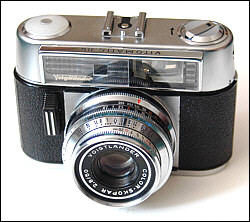P
polaski
Guest
I bought a Vito B recently to accomodate a stereo beamsplitter attachment that I didn't realize couldn't fit on my Retinas (the dorr -- duh). I learned quickly that the Vito B is a terrific small hunk of mechanical camera. Lots of fun shooting. Good lens. I picked up a Proximeter to fit it for close-ups, which raises a question:
The Proximeter instructions say to measure the correct distance, but there is no focal plane mark on the camera. Since the lens focuses inside the lens barrel, I think that's a clue to measure from the front of the lens. Any thoughts on this?
The Proximeter instructions say to measure the correct distance, but there is no focal plane mark on the camera. Since the lens focuses inside the lens barrel, I think that's a clue to measure from the front of the lens. Any thoughts on this?





